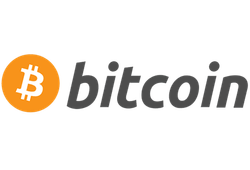
In 2021, El Salvador became the first country to adopt Bitcoin as legal tender. However, questions like "what is a Bitcoin, and how does Bitcoin work?" have been on everybody's minds for far longer.
Bitcoin is made up of two words, ‘Bit’ & ‘Coin’. If you cut the information inside computers into smaller pieces, you will find 1s and 0s. These are called bits. You already know about coins.
...and what are Bitcoins?
Bitcoins are just the plural of Bitcoin. They are coins stored in computers. They are not physical and only exist in the digital world! That’s why Bitcoin and other cryptocurrencies are often called digital currencies.
It can seem quite confusing at first, but in this guide, I'll make it as simple as possible — welcome to Bitcoin for newbies! By the end of the guide, even total beginners will understand what Bitcoin is, how to get Bitcoin, and how to use Bitcoin.
Also, do consider checking out some reliable crypto exchanges (i.e. Kucoin or Binance), if you plan on buying or selling Bitcoin! What is more, it's crucial to keep your Bitcoins in secure wallets, so consider hardware options, such as Ledger Nano X and Trezor.
Also, you should know that the simplest way to buy Bitcoins with your credit card is through Simplex - fraud-free payment processing. The choice is yours.
Let's start!
Looking for the most secure place to buy BTC? I have collected the best-rated crypto exchanges that were approved as the safest platforms for buying BTC below, so take a look.
Pros
- Transparency
- Decentralized
- Powered by the community
- No verification for new users
Cons
- Varying fees
- Not as fast compared to other cryptocurrencies
Table of Contents
- 1. How Does Bitcoin Work? Why Was Bitcoin Invented?
- 1.1. Decentralized Networks
- 1.2. Cryptography
- 1.3. Supply and Demand
- 2. What are the Advantages and Disadvantages of Bitcoin?
- 2.1. The Advantages of Bitcoin
- 2.2. The Disadvantages of Bitcoin
- 3. How do I buy Bitcoin?
- 3.1. Broker Exchanges
- 3.2. P2P (Peer-to-Peer) Exchanges
- 3.3. Bitcoin ATMs
- 4. Conclusion
How Does Bitcoin Work? Why Was Bitcoin Invented?
Let’s start with the basics...
There are three types of people in this world: the producer, the consumer, and the middleman. If you want to sell a book on Amazon, you must pay a big 40-50% fee. This is the same in almost every industry! The middleman always takes a big part of the producer’s money.
To understand what is Bitcoin, it's important to know why it was created. Bitcoin was invented to remove one type of middleman — the banks. If you need to transfer $5000 from your country to your friend in the United Kingdom, the money must go through a bank in your country. They take a fee for processing. Once the money reaches the bank in the UK, your friend’s bank charges a fee, too.

It isn’t just the fees that are the problem, it’s the data they store. Banks store lots of private data about their customers. Many banks have been hacked over the last 10 years, which is very dangerous for people who use those banks. This is why it is important to understand how does Bitcoin work.
Unlike Bitcoin, banks can freeze/block peoples’ accounts whenever they want. They have too much control over the people that use the banks, and they have abused their power. Banks played a big role in the financial crisis of 2008, too. Bitcoin started in 2009, just after that crisis. Many people believe that the crisis was one of the reasons for creating Bitcoin.
| Who created Bitcoin? The creator of Bitcoin is unknown. The name used was Satoshi Nakamoto, but this was a fake name and nobody knows who the real creator is. |
The solution was to build a system that has no single authority (like a bank). A single authority shouldn’t be given the power to control people. The banks and the governments controlled the currencies, so a new currency had to be created.
Bitcoin is the solution: it has no single authority. That means no banks, no PayPal, no government to be able to tell the bank to freeze your account. It’s great, right?
Bitcoin has had a long history, starting from the Genesis block in 2009, the first halving, the so-called "Lightning mainnet" launch, all the way to the second and third halving, the Taproot upgrade, and the recent Ordinals protocol launch. All of those are really cool and interesting events, but they mean very little if you don't understand the fundamental aspect of how Bitcoin works!
How Bitcoin Works?
The creator of Bitcoin made three main concepts for Bitcoin that are essential in understanding the principles of Bitcoin:
Let's explore each concept a bit closer.
Decentralized Networks
When you go to your internet browser and type in ‘www.google.com’, your computer starts a conversation with Google’s computers. Then, both computers start talking to each other and your browser shows images, buttons, etc. If Google’s servers were down for some reason, you wouldn’t be able to see these images and buttons. This is because the data is stored on a centralized network — it’s in one place.
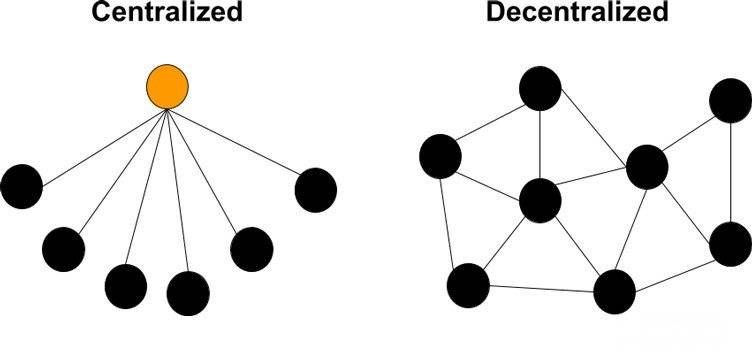
To understand how Bitcoin works, it's essential to figure out what's a decentralized network. In a decentralized network, the data is everywhere. If Google used a decentralized network, you would still be able to see the data, because it is everywhere, and not just in one place. This means that Google would never go offline!
Cryptography
In World War II, cryptography was used a lot. It converted radio messages into code that nobody could read. To read it, you would need to convert back to the original message. To do that, you needed a key. It was possible through mathematical formulas!
Bitcoin uses cryptography in the same way. Instead of converting radio messages, Bitcoin uses cryptography to convert transaction data. That is why Bitcoin is called a cryptocurrency. Knowing that takes you one step closer to understanding how does Bitcoin work.
Bitcoin does this using the blockchain. Bitcoin’s creator invented the blockchain technology!
Latest Binance Coupon Found:
$600 WELCOME BONUS
Binance Black Friday Deal
If you're new to Binance, great news - this Binance Black Friday period, you can earn up to $600 in rewards. Sign up, use the code 49316610, and start earning now!
Supply and Demand
Last week, when John visited the bakery, only one cake was left. Four other people wanted it, too. Normally, the cake only costs $2. But because 4 other people wanted the cake, he had to pay $10 for it.
This is the main concept of supply and demand: when something is limited, it has more value. The more people that want it, the more the price of it will go up. It’s the same as rare vintage cars.

Bitcoin uses this same concept. The supply of Bitcoin is limited. Bitcoin is produced at a fixed rate, which will decrease over time — it halves every four years. Bitcoin has a limit of 21 million coins; once there are 21 million Bitcoins, no more coins can be created. How many Bitcoins are there at the moment? Well, currently (27.07.20), there are 18.5 million Bitcoins created. We've still got a long, long way to go before it reaches 21 million!
So, that answers part of “how does Bitcoin work?”, but it doesn’t answer all of it. To really learn how Bitcoin works, we should move on to how the Bitcoin transactions work…
How Do Transactions Happen?
Now, let's see how these concepts work together. To record transactions, we need to put them in a database (like an Excel sheet).
This would normally be stored in one place in a centralized network. But because Bitcoin uses a decentralized network, the Bitcoin database is shared. This shared database is known as a distributed ledger and it is accessed using the blockchain. To learn more about blockchain technology and understand what are Bitcoins from the blockchain perspective better, read my "Blockchain Explained" guide.
To send Bitcoin to someone, you need to digitally sign a message that says, “I am sending 50 Bitcoins to Peter”. The message would be then broadcasted to all the computers in the network. They store your message on the database/ledger.
Let's imagine that you're a merchant, and are planning on handling a Bitcoin payment. It would look a little something like this:
- You create an invoice;
- A QR code is generated, referencing that invoice;
- Your customer scans the QR code;
- The payment is then confirmed on the network;
- You receive payment confirmation;
- Lastly, the transaction is recorded on the blockchain.
Pretty simple, when you boil it down like that!
Can Someone Fake My Identity?
When you create a Bitcoin wallet (to store your Bitcoin), you receive a public key and a private key. Public keys and private keys are a set of long numbers and letters; they are like your username and password. Both are very important for truly understanding how does Bitcoin work.
People need your public key if they want to send money to you. Because it is just a set of numbers and digits, nobody needs to know your name or email address, etc. This makes Bitcoin users anonymous!
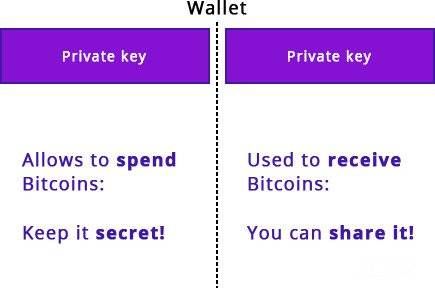
As for your private key, you should never let anyone see it. On the blockchain, your private key is your identity. You use your private key to access your Bitcoin. If someone sees it, they can steal all your Bitcoin — so be very careful!
So yes, technically, your identity can be faked. If someone gets your private key, they can use it to send Bitcoin from your wallet to their wallet. This is why you must keep your private key very, very safe.
Your real identity (your name, address, etc.) cannot be faked, though, because you do not need to use it to send or receive Bitcoin.
Can Someone Spend Bitcoin Twice?
Bitcoin transactions are grouped together and stored in blocks. These blocks are linked back to one another in a series. This is why it is called a blockchain.
Each transaction in the block has a public key written on it. If it is your Bitcoin, it will be your private key that is written on it. Because each block is connected to the block before it, no Bitcoin can be spent twice.

Let's understand how does Bitcoin work with some real-life examples. If someone tried to send the same Bitcoin twice, this is what would happen:
- David sends John a Bitcoin;
- The transaction is stored in a block on the blockchain;
- The next day, David tries to send the same Bitcoin to someone else;
- The Bitcoin transaction goes into the current block on the blockchain;
- The computers running the blockchain check the last block that the Bitcoin was used in;
- In the last block that the Bitcoin was used in, the transaction says that the Bitcoin was sent to John’s public key.
Because it isn’t John’s public key that is on the Bitcoin being sent into the current block, the computers running the blockchain do not let the Bitcoin be used.
What If Someone Tries to Tamper the Blocks?
If someone tries to change the transaction data in one of the blocks, it will only change it on their own version, just like a Microsoft Word document that’s stored on your computer.
Fun fact: The maximum block size before the first Bitcoin block size upgrade was 1 MB!
This is one of the key elements of how does Bitcoin work. To make the change go onto the shared database so that it’s on everybody’s version, they will need to control 51% of the computers in the network. It's called a "51% attack", and it involves gaining majority control of network hash rate to reverse transactions.
What If Someone Controls 51% of the Computers In the Network?
This is technically possible, but it is near impossible to achieve. Even if someone hacked 51% of the computers in the network (also known as nodes), there is another layer of security that gets in their way.
To add new blocks to the blockchain, they must be mined. This process is called mining because the nodes that do it are rewarded with Bitcoin — like gold miners being rewarded with gold.
In mining, the nodes must process Bitcoin transactions and verify that they are real. To do this, they must solve a mathematical problem. When the problem is solved, the block of transactions is verified, and a new block is created. Each block has a new problem and a new solution for miners to find.
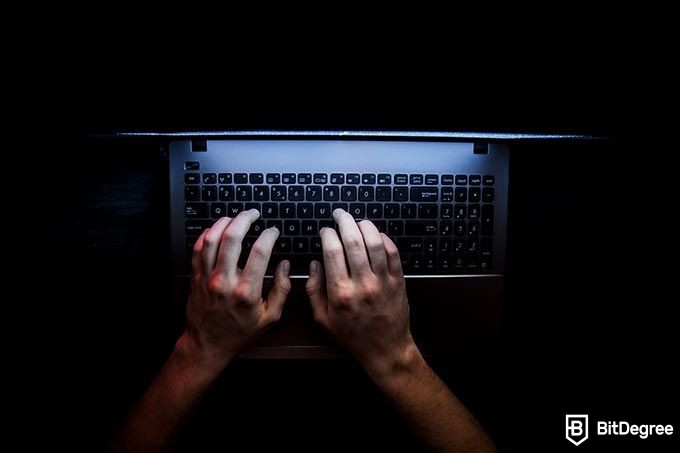
The first node to solve this problem gets new Bitcoins. Mining uses a lot of electricity, so the miners need to be rewarded!
Some more real-life explanations on how to do Bitcoin work: here’s what would happen if a hacker-controlled 51% of the nodes and tried to change a block:
- The hacker will change the data in the block so that the Bitcoin was sent to his/her public key;
- Because the data in the block has changed, there is a new mathematical problem and the hacker must solve it;
- The electricity the hacker needs to solve the problem costs more than what the Bitcoin in the block is worth;
- The hacker can continue and solve the problem, but will lose money in the process.
As you can see, it’s almost pointless for a hacker to complete an attack on the blockchain. That’s why it is so secure.
What are the Advantages and Disadvantages of Bitcoin?
You should already know what most of the advantages of Bitcoin are after reading this far into the guide. However, I haven’t talked much about the disadvantages, have I?
There are still some benefits I haven’t talked about too, though, so let’s start with the advantages and then I’ll look at the disadvantages. Then, you will fully know and be an expert on the question - how does Bitcoin work?
The Advantages of Bitcoin
✓ International payments are a lot faster than banks;
✓ Fees are low;
✓ Blockchain — near impossible to hack;
✓ Decentralized — cannot be shut down at a single point;
✓ Transparent — you don’t have to trust anyone;
✓ Anonymous — you don’t need to use your name;
✓ Powered by the community — the fees are shared instead of going to a single point (i.e. a bank or PayPal);
✓ No verification for new users — anyone can use it.
No Verification for New Users: Why is This so Important?
Another key element of how does Bitcoin work is that anyone, anywhere in the world can send money to each other. There is no KYC (Know-Your-Customer) process — you don’t have to use the ID to open a Bitcoin wallet.
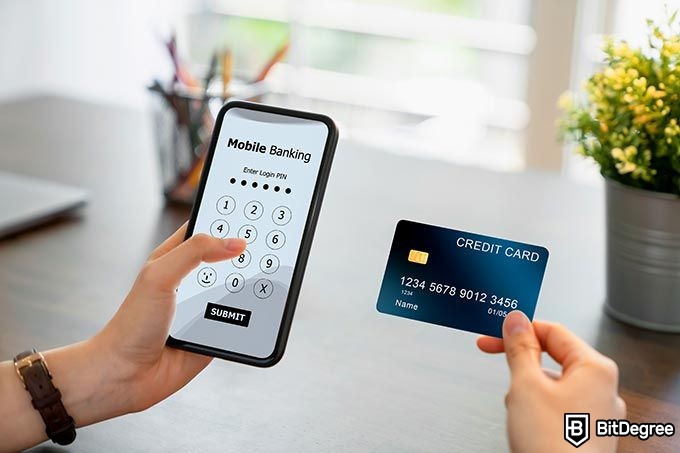
With a bank, you must use your ID when you apply for an account. Because of this, hundreds of millions of people around the world do not have bank accounts. They cannot send or receive money. Now, however, with Bitcoin, they finally can!
International Payments: A Big Advantage
If you want to send an international payment, it will normally take 3+ days with your bank and cost you a fee of around $10-15 or more. It’s different in each country, but it’s still expensive and takes a long time.
If you send it using Bitcoin, it will only take around 10 minutes. Sometimes it takes longer (up to an hour or more), but it is still much quicker than the 3+ days that the banks take. The fee for Bitcoin changes often and the developers are trying to keep it as low as possible. At present (27.07.20), it is around an average of $3.
It is cheap because there is no middleman (banks, PayPal, etc.) to pay! This what Bitcoin is all about.
Now, let's take a look at the shortcoming of how does Bitcoin work.
The Disadvantages of Bitcoin
✗ Mining uses lots of electricity;
✗ Not as fast as other cryptocurrencies;
✗ Fees change a lot;
✗ Anonymous — used for crime;
✗ Difficult to use — private keys, public keys, etc.
Fees and Speed: Bitcoin is Nearly 10 Years Old
Bitcoin started in 2009, remember? Well, that’s almost 10 years ago! Since then, a lot of newer cryptocurrencies have been made that are a lot faster than Bitcoin. Also, Bitcoin’s fees have sometimes increased as high as $28!
The fees got high because the popularity of Bitcoin was too much for the Bitcoin network to deal with — there were too many people using it. This is something the Bitcoin developers are trying to improve, and so far, it seems to be working. As I said earlier, the Bitcoin fees are back down to $1!
Of course, there are other BTC-related alternatives that aim to tackle the network's transaction fee and speed issues, as well. The Lightning Network is a Layer-2 solution for BTC to speed up transactions using off-chain payment channels. That's just one example!
Bitcoin Isn’t Very Easy to Use
The downside of how does Bitcoin work is that it needs private keys, public keys, opening and using a wallet, etc. It’s not very easy for people who aren’t confident about using computers. When you want to send a payment to someone, you must type a long set of numbers and letters (their public key) into your computer. Legacy (P2PKH) is the original Bitcoin address format, but nowadays, BTC uses newer formats. That said, they are still difficult to read and type out.
This is like when internet browsers first started — you had to type a long number into the address bar. Later, the (www.) addresses we use today replaced it. Bitcoin needs to become easy to use so that everyone in the world can use it, just like browsing the internet is.
Electricity and the Environment
As I said earlier, electricity costs for mining are high. The miners are rewarded with Bitcoin, so they are still making a profit. However, the electricity used by miners is very bad for the environment (now you know some downsides of the question about how does Bitcoin work).
Other cryptocurrencies, such as NEO and Lisk, are using a different mining system that uses much less electricity. This system is called PoS (Proof-of-Stake).
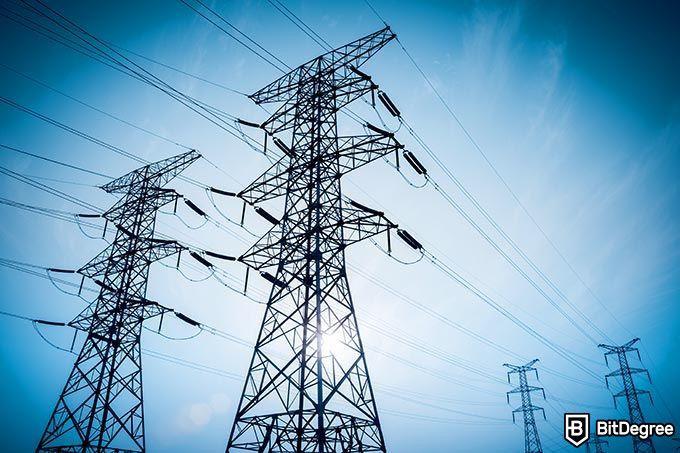
Remember that in Bitcoin’s system, the miner that verifies the block first is the one who is rewarded with Bitcoin? That system is called PoW (Proof-of-Work). It’s like a race, isn’t it?
Proof-of-Work
All the miners work on the same block at the same time, trying to win the race. This means that all miners are using electricity on every block that is created.
Proof-of-Stake
In PoS, only one miner can mine the block. When the next block is created, another miner is chosen to mine it. This way, it is only one miner using electricity on each block. That’s much cheaper and better for the environment!
Bitcoin’s Criminal Record
One of the darkest sides of how does Bitcoin work is that you don’t have to use your identity, because of that Bitcoin has been in the news a lot for being used by criminals. You might have heard of something called Silk Road. This was a market on the dark web — an anonymous part of the internet that must be opened using a special browser.
On Silk Road, you could buy lots of illegal things, and Bitcoin the currency that is used. Silk Road started in 2011 but was shut down in 2013 by the FBI.
This was very bad for Bitcoin, and some governments have tried to ban the cryptocurrency for this reason. It is the biggest example of how Bitcoin can be abused, although, crime can happen with all currencies.

Did you know?
Compare Crypto Exchanges Side by Side With Others
All Crypto Exchanges may look similar to you but they're NOT all the same!
Latest Deal Active Right Now:
$600 WELCOME BONUS
Binance Black Friday Deal
If you're new to Binance, great news - this Binance Black Friday period, you can earn up to $600 in rewards. Sign up, use the code 49316610, and start earning now!
How do I buy Bitcoin?
You know how does Bitcoin work, what it is, what it’s good for, and what it’s bad for. The only thing left is to know how to buy it. So, how do you buy Bitcoin?
There are three main options.
Broker Exchanges
This is the simplest way, but you normally must use your identity. This means using your name, address, and passport/driver's license. Fees for broker exchanges normally cost between 1-5%, but it depends on your location on how you pay.
The good thing is, you can pay using bank transfer, debit/credit card, and even PayPal. I recommend Binance because it’s easy to use, and very reliable. 
Using a broker exchange is a bit like when you go to a travel agent to convert your local currency into a foreign currency (like USD for JPY, for example).
P2P (Peer-to-Peer) Exchanges
These are like broker exchanges, but they don’t use a middleman — there is no broker. For example, John can send money to Amy, and Amy will send John some Bitcoin. There is no broker, so they pay no fees!
Amy will always have to pay John the Bitcoin because P2P exchanges use an escrow service. When John asks Amy for the Bitcoin, the Bitcoin is sent into the escrow. When John pays Amy his money, the escrow sends John his money. John and Amy have no control over the escrow, so it is always fair. Fair trade is one of the essentials on understanding how does Bitcoin work.
Some sellers on P2P exchanges will ask you for ID, but some sellers won’t. So, it is possible to use P2P exchanges to buy Bitcoin anonymously. You can even pay in cash (paper money)!
You can also pay with bank transfer! I recommend using the LocalBitcoins.
Bitcoin ATMs
This is the least common way to buy Bitcoin. There are not many Bitcoin ATMs in the world, so you will have to use this map to see if there is one near you. If there is, you can go to it and buy your Bitcoin using cash, but the fees are expensive — 5-10%.
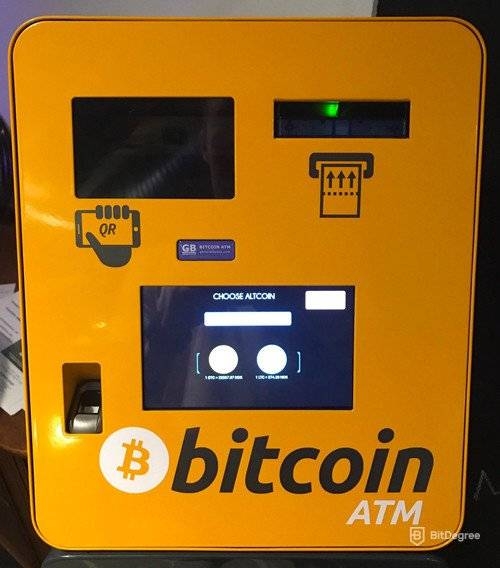
To learn more about Bitcoin ATMs, P2P exchanges and broker exchanges, read our guide on how to buy cryptos. In that guide, I give you full instructions on setting up your wallet, verifying your identity and buying Bitcoin with each payment method.

Did you know?
Compare Crypto Exchanges Side by Side With Others
All Crypto Exchanges may look similar to you but they're NOT all the same!
Conclusion
The invention of Bitcoin was only the beginning. As recently as in 2023, a new protocol that crafts NFTs directly on BTC was launched - it's called "Ordinals". Or, there's a suggested technology that allows extended capabilities for BTC smart contracts without modifying its core code, called "BITVM". This just goes to show that people are still finding new ways to use Bitcoin, even after so much time has passed since its launch in 2009.
Some people are using Bitcoin and other cryptocurrencies instead of banks, but it still hasn’t completely replaced banks. What are your thoughts? Do you think that Bitcoin will replace banks? Or does it need to improve first?
By answering the above questions, you can test what you have learned in this guide. You can also try to answer the question “how does Bitcoin work?” in just three sentences. Try it — it’ll help you remember what you’ve learned. Post your answer in the comments!
Finally, remember - use only the most trustworthy exchanges when purchasing or selling Bitcoin!
Let's go through the process of how to buy Bitcoins once again:
1. Get a reliable cryptocurrency wallet that will keep your assets secure (Ledger Nano X and Trezor Model T are among the most recommended hardware wallets).
2. Sign up to Binance.
3. Purchase Bitcoin in USD or any other available currency.
4. Copy your Bitcoin wallet address.
5. Send your Bitcoins your wallet.
OR
Choose an alternative way, and purchase Bitcoins with your credit card through another high-end cryptocurrency exchange.
That's it, now you own Bitcoins!
The content published on this website is not aimed to give any kind of financial, investment, trading, or any other form of advice. BitDegree.org does not endorse or suggest you to buy, sell or hold any kind of cryptocurrency. Before making financial investment decisions, do consult your financial advisor.













